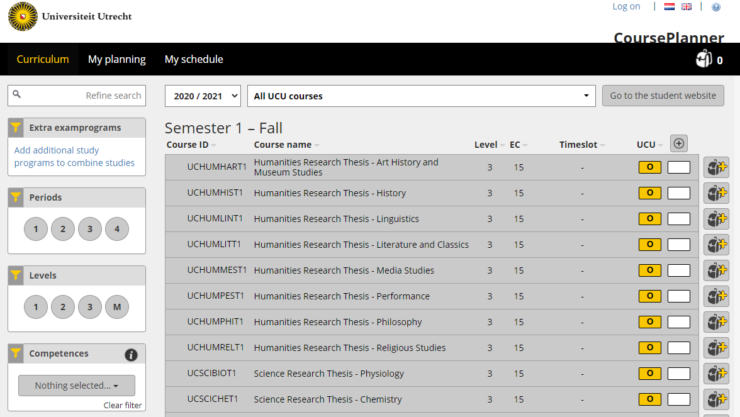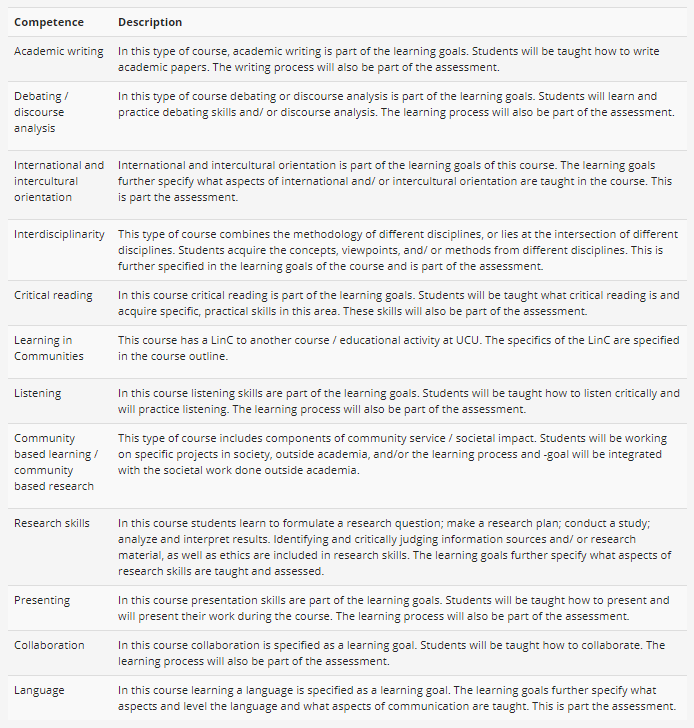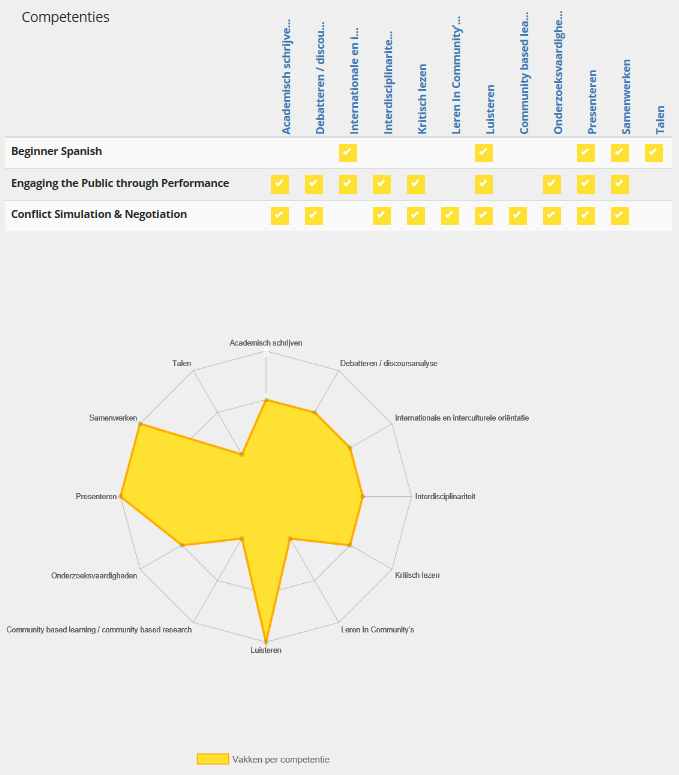Blog
UU CoursePlanner (CursusPlanner) and competency labels
In the previous blogs I told you about the website changes and MS Teams as part of our innovation project. This blog is about the UU CoursePlanner, in Dutch ‘CursusPlanner’. This being the UU teacher community, I assume everyone is familiar with CoursePlanner and its functionalities. For the students it is a helpful tool in getting detailed information about the courses. It also helps them to plan their program. The information is always up-to-date because it is daily updated from Osiris.

At UCU, CoursePlanner was rarely used for planning, as far as we know. But students did use the Curriculum landing page to easily browse through courses. Furthermore, CoursePlanner is used to find courses of other bachelor and master programmes. UCU students did not use the functionalities of the My Schedule and My Planner page.
Skills and competencies
Students at UCU gain a number of skills and competencies that are reflected in the end terms of the programme.
Students at UCU gain a number of skills and competencies that are reflected in the end terms of the programme. These are not explicitly mentioned in the learning outcome of the individual courses. But students are not always aware that they acquire these skills and competences. At UCU, we wanted to visualise these skills and competencies for three reasons:
- To be able to show that students adhere to the end terms of the programme in their individual pathways
- For students to see that they indeed acquire these skills, which they help them in building a personal portfolio for future endeavors
- For students to be able to make curricular choices based on competencies or skills they want or need to work on
Next to skills and competencies, a few labels of another order were included as well. Examples are learning in communities and community based learning. These are overarching topics in the curriculum, that are important for UCU. In this figure you find an overview of the labels.

This mixed list of competencies, skills and labels was entered in an Osiris field called “Competencies”. This field in the software of Osiris was available for the UU, but not yet in use. On the UCU pages of CoursePlanner an item called ‘competencies’ now appears in the left column. Next to the other filters, like extra exam programmes, periods and levels. This way, students can filter courses with specific competence labels.
After putting courses in the backpack, the backpack overview shows the use of these labels. Next to the table, a spider web graph informs students of the number of courses with certain labels.

The view of the students
In focus sessions, these new features were shared with UCU students. The students liked the overview of competency labels. They said it will help them to present themselves in a professional manner. For example when writing a CV, motivation letters and other documents. And they indicated the labels can help in deciding between two courses. The overview was seen as helpful in the discussions between tutors and students. This can be part of the reflection of students. It also can encourage students to choose for acquiring all labels, also the ones outside their comfort zone.
The possibilities of the competency field in UU CoursePlanner
The competency field in Osiris has more potential beyond UCU. Since the label is available in Orisis, any programme can use this competency field. Some technical issues should be solved to be able to have a specified content for each programme. But even within current technical possibilities of Osiris it is possible to work with a general UU-wide basic list of labels besides programme specific labels. This can work if all labels are coded in a recognisable and identical way.
Furthermore, there is a growing body of education activities that is open to students from different programmes and faculties. These are interdisciplinary courses, community engaged learning, challenge based learning. Also there are courses within the UU strategic themes. A field like we used can make those options visible for all students. As an extra feature, these courses could show up for all students regardless of the program they follow. Or they could be made available by adding an “open for all” programme. I see a lot of possibilities.
I hope this made you think about how this relates to your programme or interests and I look forward to any reaction!!
Lastly, I would like to use this platform to thank everyone who worked with me on this exiting project. I want to express my appreciation and thanks in particular to Joris Veenhoven, Dick Kampman and Elsa van Straaten. It has been a pleasure working with you on this project!
 13 november 2020
13 november 2020 U moet ingelogd zijn om te reageren, gebruik het formulier aan de linkerkant om in te loggen met uw solis gegevens.



 2
2